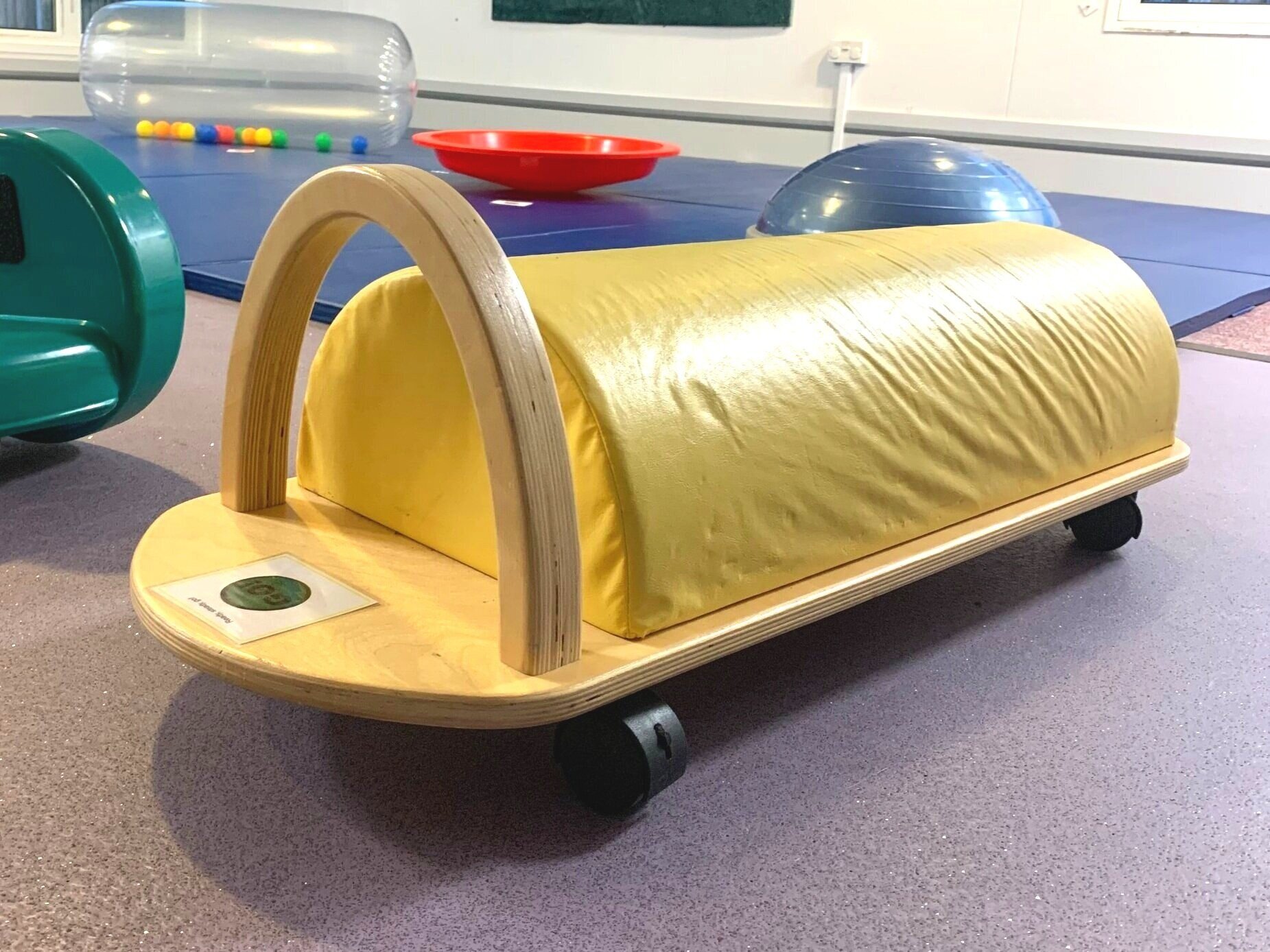Physical and Sensory Development
In the Springboard Curriculum, we recommend that children access a daily physical development and sensorimotor integration session as part of a broad and balanced curriculum. During this session, activities are planned to provide pupils with the opportunity to develop their gross and fine motor skills, mobility and sensory integration.
Children with severe, complex and profound special educational needs have a range of physical and sensory abilities and difficulties related to neurological impairments or neurodevelopmental differences. For some pupils, their physical skills will be their strength; these pupils will require access to more challenging physical activities. Other pupils will have significant physical disabilities or sensory integration challenges and require access to specialised programmes of movement activities.
For the majority of pupils with severe, complex and profound special educational needs, their opportunity to develop sensory integration will have been adversely impacted upon.
Within an inclusive classroom environment, it is important to create a physical and sensory area which can be adjusted to meet the needs of a particular group or individuals within that group.
Physical and Sensory Area
This is a large matted area which is used by each group for one session per day. Rather than having permanently installed equipment, the equipment available can be used flexibly to create different physical and sensorimotor integration opportunities for pupils with differing needs and abilities.
It can also be used by an Ayres’ Sensory Integration Trained Therapist for 1:1 Ayres Sensory Integration sessions.
Equipment for movement activities
Ensure you have a variety of equipment for children to participate in a range of movement experiences. This equipment can be used in different ways for pupils depending on their needs and will support both physical and sensory development and their emotional regulation. Make sure you have equipment which enables pupils to explore swinging, rocking, rolling, bouncing, jumping, spinning, wheeling, squashing, pushing, pulling, crawling, climbing and balancing.
Using the outdoor area for physical and sensory development
A well-planned outdoor area provides a wealth of opportunity for children to develop their physical and sensory skills and experience different kinds of movement. Make sure you have a selection of appropriate equipment which is accessible for all and make the most of playing outside in nature. A swing is particularly valuable - make sure it is accessible both for children who are able to move independently and those with more complex physical needs. Don’t forget that local play parks may have an excellent range of accessible outdoor equipment!
Planning for play
The physical and sensorimotor integration session should be seen as an environment for fun, playful adult-child interactions, as all other sessions within the day are.
As well as developing pupil’s physical and sensorimotor integration skills, movement activities can be fun, highly motivating and provide obvious opportunities for the development of communication skills. Make sure you have the full range of communication resources available during physical sessions to support this - photos, symbols and symbol boards to model and support pupils to communicate about the activities.
You will need a wide selection of resources to use in the physical and sensory session. Many of these can be used flexibly in a number of ways with different children and to meet differing levels of need. They also do not need to be expensive - large cardboard boxes, big sheets of fabric or sofa cushions used creatively can provide lots of playful movement opportunities. You can also look to see what is available at your local park.
We love to have available: scooter boards, a bosu, therapy roll, chinese spinning hat, bag of balls, a walrus cushion, soft climb steps and slide, heavy fabric, light fabric, squeak steps and BIG sofa cushions.
Boardmaker Symbols: PCS and Boardmaker are trademarks of Tobii Dynavox LLC. All rights reserved. Used with permission.
Team Meeting.
Meet with the multi-disciplinary team (including a therapist trained in Ayres Sensory Integration) and learn more about what sensory integration means for individual pupils that you are working with.
Work closely alongside a physiotherapist to make physical programs fun and engaging and ask for support to find opportunities to turn physical programs into functional programs as pupils move and learn throughout the day.
Look in old PE cupboard stores and see what equipment is already available in the school. What is one person’s trash is another person’s treasure so ask teachers too if there is anything that they are no longer using or do not know how to use.
If you are enjoying our content, The Springboard Curriculum is available to buy here as an immediate digital download. You can follow the link to view sample pages before you buy. The reason we decided to share our work? To allow educators to use their time creatively to maximise play and tailor the learning activities to the strengths and challenges of each pupil.
£1 of every sale goes to the school’s charity to give back to the educators and pupils who inspired the curriculum.





